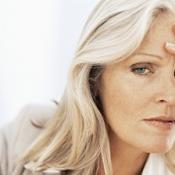The Diagnostic and Statistical Manual of Mental Disorders, better known as the DSM, contains the definitions of and criteria for what its authors have determined to be every known psychiatric disorder. The DSM is periodically revised, and the current version, the DSM-IV-TR, is soon to be replaced by the DSM-V, scheduled for release in May.
The eating disorders category will be undergoing some big changes. In the current edition, eating disorders include anorexia nervosa (AN), bulimia nervosa (BN), and eating disorder not otherwise specified, aka EDNOS. Binge eating disorder (BED) is listed in the DSM-IV-TR appendix as a diagnosis designated for further study, and as a subset of EDNOS. In the DSM-V, the criteria for AN, BN, and EDNOS will be different, and binge eating disorder (BED) will be classified as a full-fledged disorder.
The good news about these changes is that the range of eating disorder categories has been expanded to include attitudes and behaviors that previously didn’t meet the criteria for an “official” eating disorder, and modified so that the diagnoses more accurately describe and reflect the experiences of individuals who have eating issues.
Here are some of the changes I believe to be important: First, in the first criterion for anorexia nervosa, the phrase beginning with “refusal to maintain body weight at or above a minimally normal weight for age and height” has been removed. This speaks to the misperception that people who have anorexia nervosa are choosing, of their own volition, to keep their weight in a certain range. Many of my clients say to me, “My [parents, siblings, friends, etc.] think I’m doing this on purpose. They don’t understand.” And certainly, to anyone who is close to someone with anorexia nervosa, the seeming insistence of the afflicted on remaining underweight is baffling and frustrating. But the change in this criterion more accurately reflects that this is not a matter of choice. The new criterion simply states that caloric restriction resulting in significantly low body weight occurs.
This leads to the next change: The criterion, “Intense fear of gaining weight or becoming fat,” references what is, for many who have anorexia nervosa, the driving force behind the behaviors that cause the resultant, dangerously low body weight. But there are some who have anorexia nervosa who don’t experience this fear, and so the phrase, “… or persistent behaviors that prevent weight gain, even though at a significantly low weight,” will be added. In my experience, although most of my clients who have anorexia nervosa are in the grips of extreme fear of weight gain and of becoming fat, there have been some who developed an aversion to or fear of taking in an adequate number of calories, but who don’t identify with the fear of gaining weight or getting fat. These clients have been over-focused on following rules about food that they believe to be “right,” even though they’re not getting enough, or exercising to relieve anxiety, even though they’re expending too much. So this new phrase recognizes their experience.
The third criterion, which pertains to body image, is slightly changed, again, to more accurately reflect the nonvolitional nature of the illness: The DSM-IV and DSM-V versions both begin: “Disturbance in the way in which one’s body weight or shape is experienced, undue influence of body weight or shape on self-evaluation,” but the last part in the DSM-IV reads: “or denial of recognition of the seriousness of the current low body weight.” This will change to, “or persistent lack of recognition of the seriousness of the current low body weight.” I believe this is important because “denial” implies that the person in question is aware of the seriousness but intentionally does not acknowledge it, and the new language simply states the fact of the matter.
Also, the fourth criterion for anorexia nervosa, which pertains to cessation of menstruation, has been removed and will not appear in the DSM-V. This means women whose menses have been affected by the weight loss and inadequate nutrition but who still menstruate sometimes, women who are postmenopausal, and women whose periods are artificially generated by contraception or other hormonal interventions but who otherwise meet the criteria will no longer be excluded from a diagnosis of anorexia nervosa and instead given a diagnosis of EDNOS, as is currently the case, given the EDNOS criterion in the DSM-IV for meeting all criteria for AN except the cessation of menses criterion.
The dividing of anorexia nervosa into two subtypes, restricting and binge eating/purging, remains. This makes a distinction between anorexia nervosa and bulimia nervosa. This is important because of the common misconception that binging followed by purging (defined as self-induced vomiting, or laxatives, diuretics, or enemas) is always BN. Someone who meets the criteria for AN and who binges and purges does not have BN; he or she has AN, binge/purge subtype. This distinction informs the course of treatment, as someone with AN is functioning with an undernourished brain, and that brain usually is not capable of doing much of the work of therapy. The first line of treatment for someone with AN is to get him or her appropriately re-fed.
For BN, there are a few changes, all related to one another. One is the elimination of a distinction between “purging,” as referenced above, to rid the body of food, and “inappropriate compensatory behaviors,” e.g., exercising or fasting, to make up for the calories taken in. In the BN criteria in the DSM-V, the word “purge” has been purged, and only “inappropriate compensatory behaviors” are mentioned. There’s a reduction of frequency of binge/compensate episodes from an average of twice a week to once a week for at least three months. This means that people who haven’t “qualified” for the diagnosis because they didn’t binge and compensate often enough, and would thus have met the criteria for EDNOS rather than BN, will now be able to be diagnosed with BN. (One of the reasons this is important is that BN, as well as AN, is one of the nine “parity diagnoses” that, according to U.S. law, must be covered by insurance benefits equivalent to the benefits for physical ailments by insurance companies that offer mental health coverage.) And there will no longer be a criterion for “purging and nonpurging (that was the fasting, exercise, etc., piece) subtypes.”
The best news, from my point of view, is the inclusion of binge eating disorder. In the DSM-IV, since BED was classified as a diagnosis being studied for inclusion, the only “official” mention is the one criterion of EDNOS of binge eating without inappropriate compensatory behaviors. For years, I’ve worked with people who binge eat, but who don’t believe they have an eating disorder because they’re not underweight and they don’t make themselves throw up. Binge eaters often believe they are weak and just need more willpower, and it’s my hope that the addition of BED as an official diagnosis will reduce the shame of those who have it and increase the understanding of those who don’t.
The same criteria used in the DSM-IV for the provisional BED diagnosis will be used in the DSM-V. It describes binge eating as eating an unusually large amount of food in a given period, accompanied by a sense of lack of control over eating during the episode—like the eater couldn’t control the amount of food or stop eating. The eater must experience three out of five associated states:
- Eating much more rapidly than normal
- Eating until feeling uncomfortably full
- Eating large amounts of food when not feeling physically hungry
- Eating alone because of being embarrassed by how much one is eating
- Feeling disgusted with oneself, depressed, or very guilty after overeating
The binge eater must be very distressed about his or her binge eating, binges must take place at least twice a week for at least six months, and there must be no “inappropriate compensatory behaviors” following a binge.
I’ve read that the EDNOS category might be renamed as “feeding and eating conditions not otherwise classified.” It will comprise “atypical AN” (all the criteria for AN except the weight criteria having been met), “subthreshold BN” and “subthreshold BED” (BN or BED behaviors and attitudes that don’t occur long enough or often enough to meet the criteria of the full-blown disorder), “purging disorder,” i.e., inducing vomiting or using other inappropriate compensatory behaviors after eating a small amount of food or a regular meal, “night eating syndrome,” and “other feeding or eating condition not elsewhere classified.” Repeatedly chewing and spitting out food, which was listed in the DSM-IV EDNOS category, doesn’t seem to be appearing in the DSM-V. I’m a little puzzled as to why this is, as I’ve worked from time to time with clients who do this.
Research tells us what the impact of these changes will be, in terms of the number of people diagnosed with eating disorders. In a University of Florida study of 396 disordered eaters, researchers found that, using DSM-IV criteria, 14% had AN; while using DSM-V criteria, 20% had AN. Eighteen percent of subjects had BN using both DSM-IV and DSM-V criteria, but 68% had EDNOS using DSM-IV criteria; while using the DSM-V criteria, 8% had BED, and 53% had EDNOS. This tells us that the upcoming DSM-V changes will decrease the number of people diagnosed with EDNOS. (Int J Eat Disord. 2011 Sep;44(6):553-60. doi: 10.1002/eat.20892. Epub 2011 Feb 14.)
These changes reflect the progress that’s been made in understanding the complex nature of eating disorders. I hope this gives more access to sound information and effective treatment for those who need it.
© Copyright 2013 GoodTherapy.org. All rights reserved.
The preceding article was solely written by the author named above. Any views and opinions expressed are not necessarily shared by GoodTherapy.org. Questions or concerns about the preceding article can be directed to the author or posted as a comment below.

 Boundaries, Bodies, and the Beauty of Interdependence
Boundaries, Bodies, and the Beauty of Interdependence Eating Issues, Aging, and Women
Eating Issues, Aging, and Women Sugar Addiction and Mental Health: America Needs Rehab
Sugar Addiction and Mental Health: America Needs Rehab